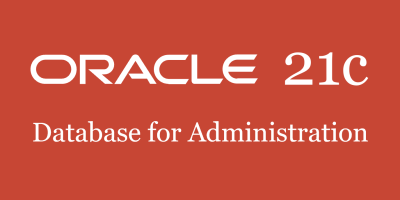Day 1
Introduction (Database Architecture)
- Describe course objectives
- Explore the Oracle 10g database architecture
Installing the Oracle Database Software
- Explain core DBA tasks and tools
- Plan an Oracle installation
- Use optimal flexible architecture
- Install software with the Oracle Universal Installer (OUI)
Creating an Oracle Database
- Create a database with the Database Configuration Assistant (DBCA)
- Create a database design template with the DBCA
- Generate database creation scripts with the DBCA
Managing the Oracle Instance
- Start and stop the Oracle database and components
- Use Enterprise Manager (EM)
- Access a database with SQL*Plus and iSQL*Plus
- Modify database initialization parameters
- Understand the stages of database startup
- View the Alert log
- Use the Data Dictionary
Day 2
Configuring the Oracle Network Environment
- Use Enterprise Manager for configuring the Oracle network environment
- Create additional listeners
- Create Net Service aliases
- Configure connect-time failover
- Control the Oracle Net Listener
- Test Oracle Net connectivity
- Identify when to use shared versus dedicated servers
Managing Database Storage Structures
- Describe table data storage (in blocks)
- Define the purpose of tablespaces and data files
- Understand and utilize Oracle Managed Files(OMF)
- Create and manage tablespaces
- Obtain tablespace information
- Describe the main concepts and functionality of Automatic Storage Management (ASM)
Administering User Security
- Create and manage database user accounts
- Authenticate users
- Assign default storage areas (tablespaces)
- Grant and revoke privileges
- Create and manage roles
- Create and manage profiles
- Implement standard password security features
- Control resource usage by users
Managing Schema Objects
- Define schema objects and data types
- Create and modify tables
- Define constraints
- View the columns and contents of a table
- Create indexes, views and sequences
- Explain the use of temporary tables
- Use the Data Dictionary
Day 3
Managing Data and Concurrency
- Manage data through SQL
- Identify and administer PL/SQL Objects
- Describe triggers and triggering events
- Monitor and resolve locking conflicts
Managing Undo Data
- Explain DML and undo data generation
- Monitor and administer undo
- Describe the difference between undo and redo data
- Configure undo retention
- Guarantee undo retention
- Use the undo advisor
Implementing Oracle Database Security
- Describe DBA responsibilities for security
- Apply the principal of least privilege
- Enable standard database auditing
- Specify audit options
- Review audit information
- Maintain the audit trail
Proactive Maintenance
- Use statistics
- Manage the Automatic Workload Repository (AWR)
- Use the Automatic Database Diagnostic Monitor(ADDM)
- Describe advisory framework
- Set alert thresholds
- Use server-generated alerts
- Use automated tasks
Day 4
Performance Management
- Use Enterprise Manager pages to monitor performance
- Use the SQL Tuning Advisor
- Use the SQL Access Advisor
- Use Automatic Shared Memory Management
- Use the Memory Advisor to size memory buffers
- Use performance related dynamic views
- Troubleshoot invalid or unusable objects
Backup and Recovery Concepts
- Identify the types of failure that may occur in an Oracle Database
- Describe ways to tune instance recovery
- Identify the importance of checkpoints, redo log files, and archived log files
- Configure ARCHIVELOG mode
Performing Database Backups
- Create consistent database backups
- Back your database up without shutting it down
- Create incremental backups
- Automate database backups
- Monitor the flash recovery area
Day 5
Performing Database Recovery
- Recover from loss of a control file
- Recover from loss of a redo log file
- Perform complete recovery following the loss of a data file
Moving Data
- Describe available ways for moving data
- Create and use directory objects
- Use SQL*Loader to load data from a non-Oracle database (or user files)
- Explain the general architecture of Data Pump
- Use Data Pump Export and Import to move data between Oracle databases
- Use external tables to move data via platform-independent files
